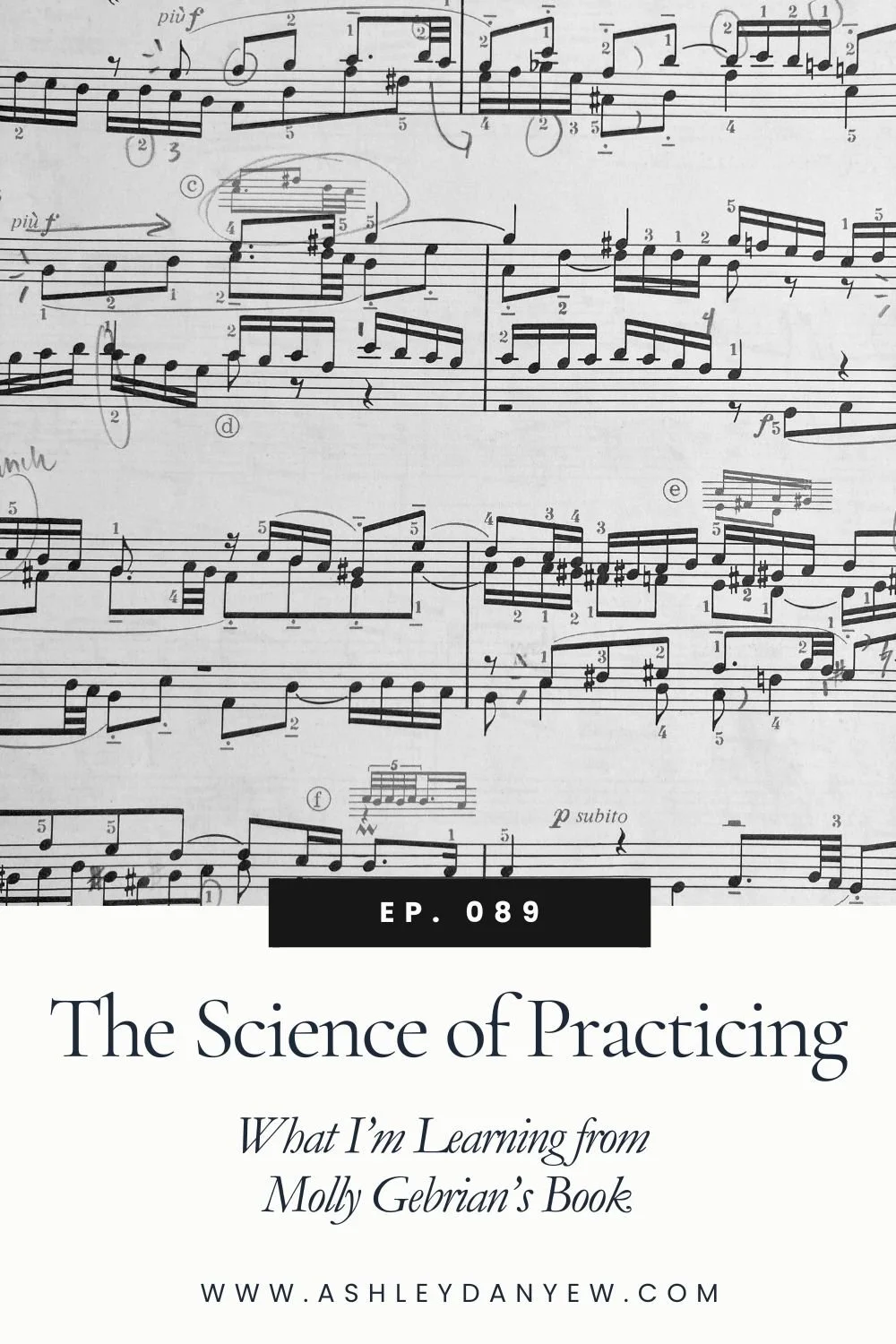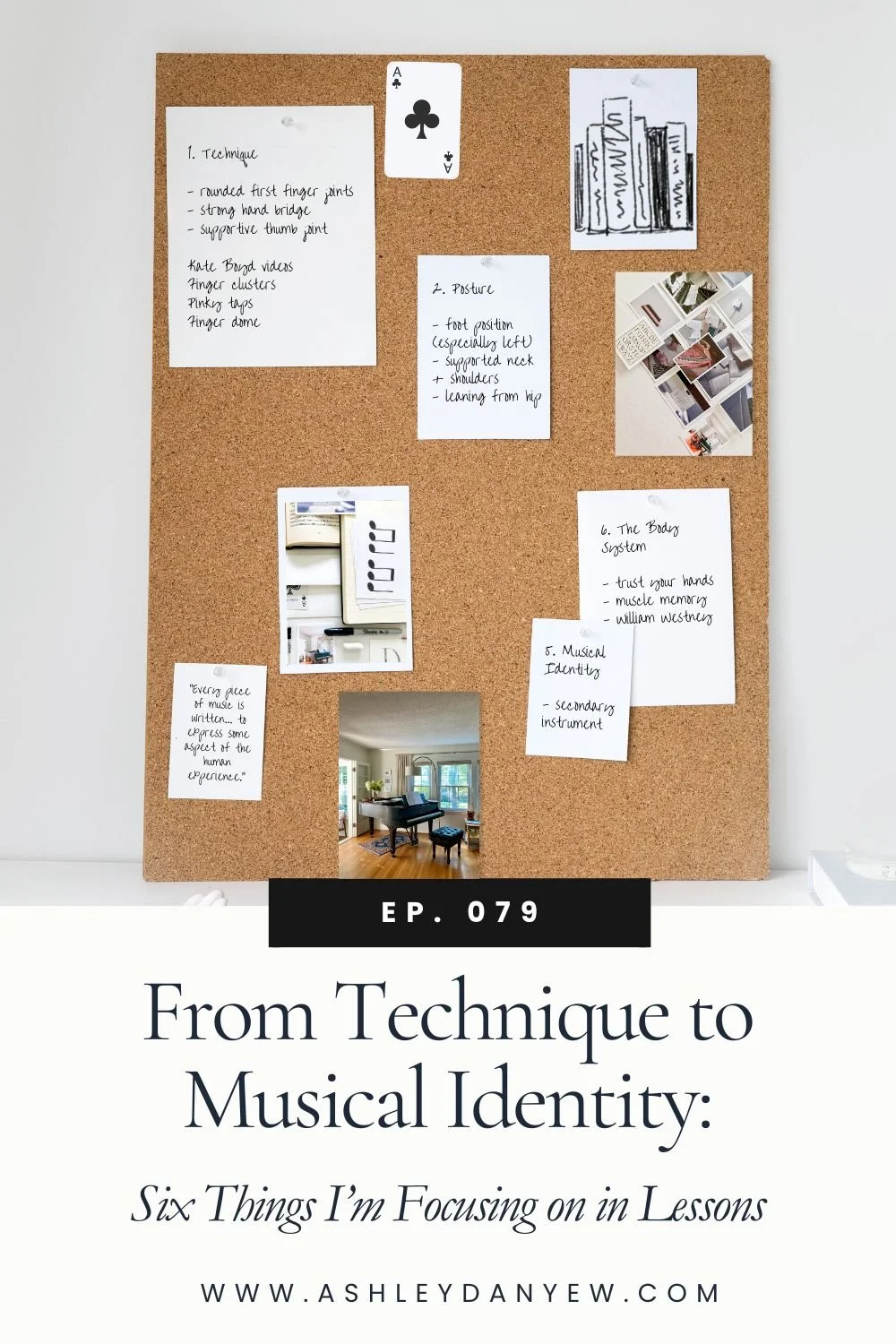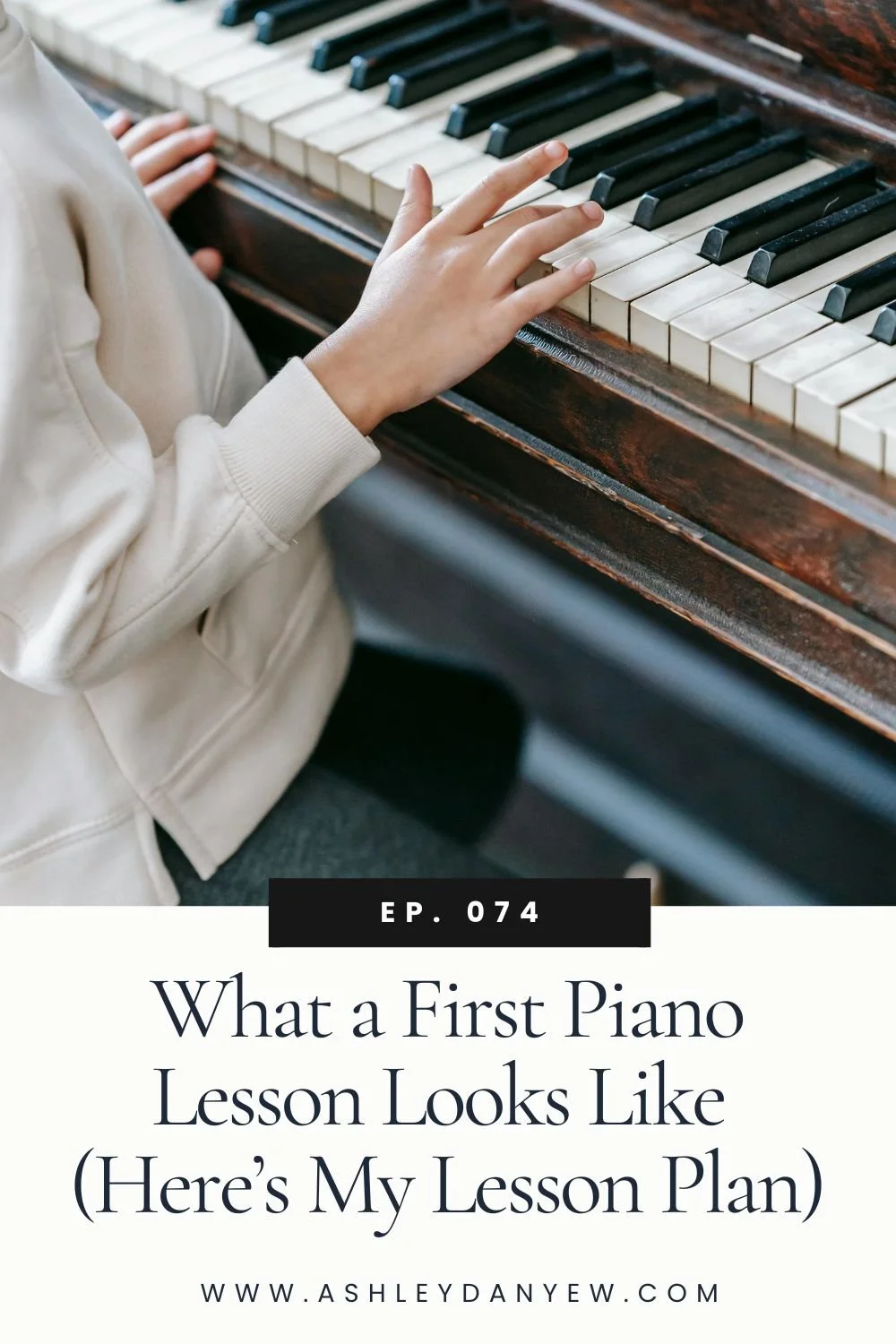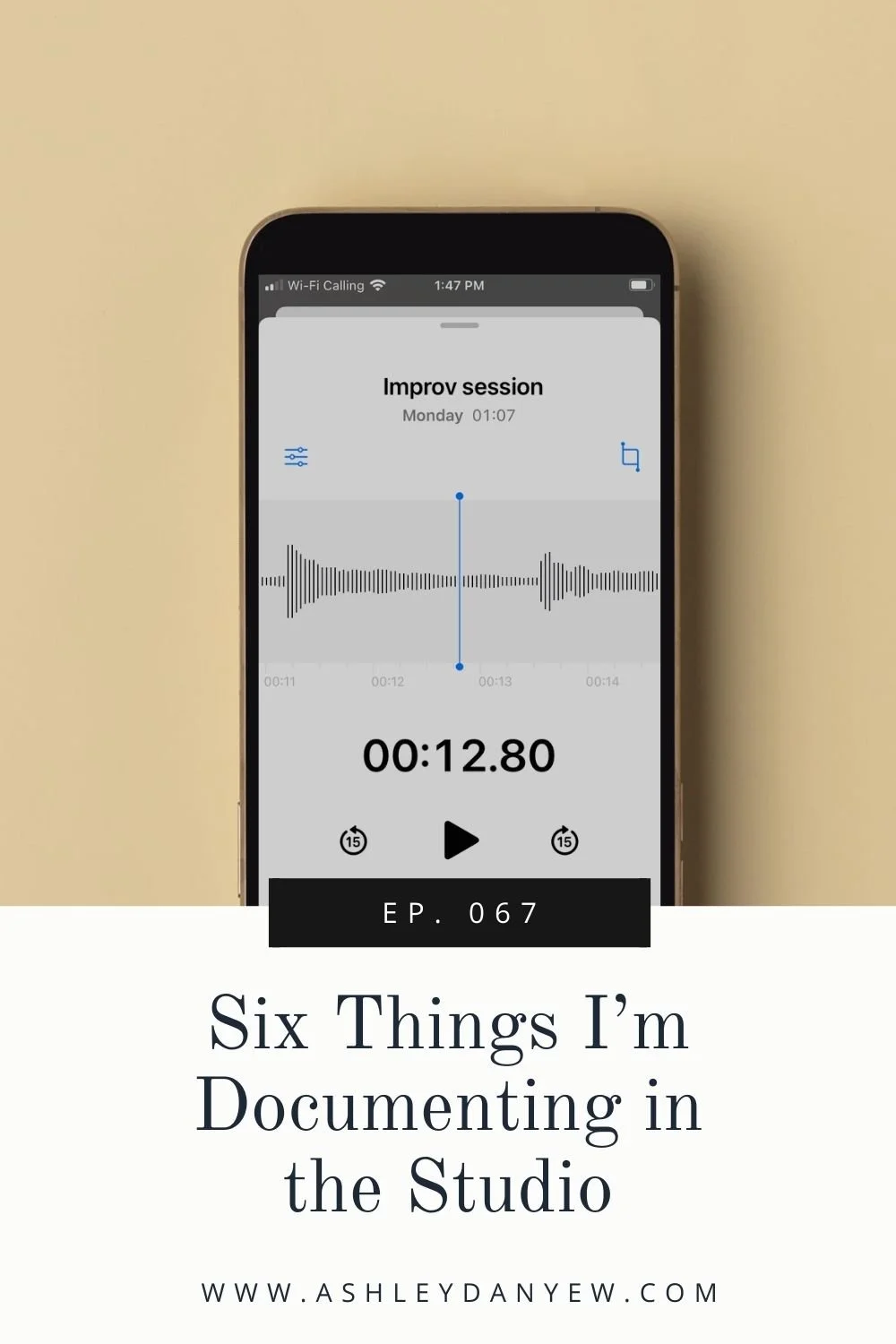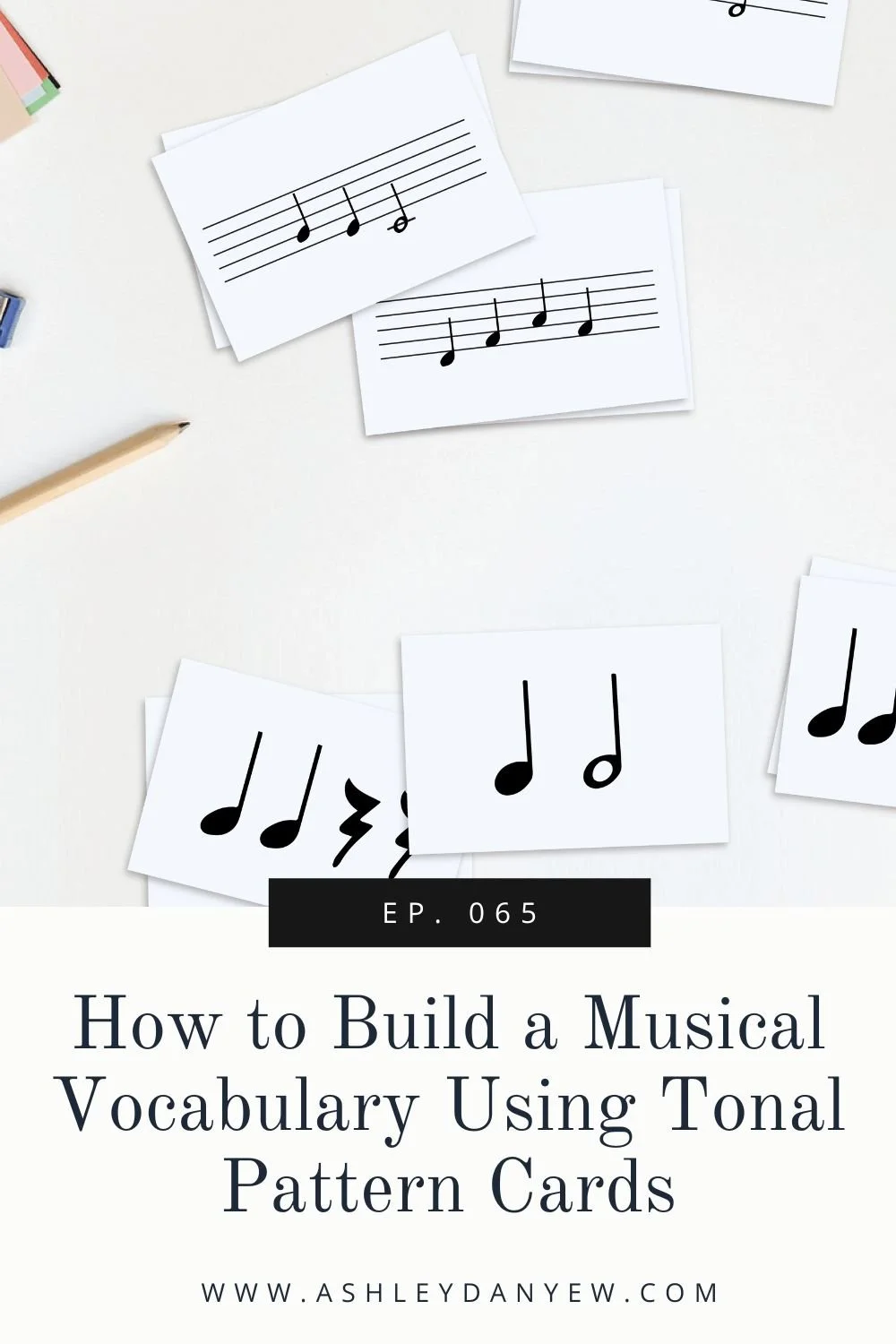Resources Mentioned
*Disclosure: I get commissions for purchases made through some of these links.
8 Simple Ways to Tap Into Your Inner Child (HuffPost)
Wunderkeys Primer Piano, Book 2 (Andrea Dow)
Free Rhythm Pattern Card Set - a printable set of 16 rhythm patterns cards in 4/4 time
Rhythm Pattern Card Set - a printable set of six rhythm pattern card sets in duple and triple meters (192 patterns total)
Decide Now! app + how I use it in my teaching
I love working with five-year-olds.
I love their creativity, their fearlessness, their willingness to try new things, their crazy imaginations, and the way they make everything silly and fun.
Five just might be my favorite age.
Some suggest that embracing your inner child (and, in some cases) thinking like a five-year-old is actually beneficial for creativity, lifelong learning, and the development of core leadership skills (source).
After all, five-year-olds are about as creative as they come (try asking one how many patterns they can create with notes C, D, and E).
Of course, we were all five once. But it’s all too easy to forget what that sense of wonder feels like, to be curious and inquisitive, to ask questions and seek out the answers, to try something you’ve never tried before. All of these things help us see the world in new ways, expand our horizons, step outside our comfort zones and open ourselves up to possibility and discovery.
So, next time you need a fresh spark of creativity or you want to see the world from a new perspective, try channeling your inner five-year-old. Today, I’m sharing eight ways to do that.
No. 1 - Ask Questions
I was on a plane at the beginning of the year, sitting in front of a dad and a little girl (about 3 years old). As they settled into their seats, the dad pulled out a newspaper and began to read.
“What are you doing, dad?” The little girl asked.
“I’m reading an article in the newspaper,” he said.
“Why are you reading an article in the newspaper?” she asked.
“Because I like reading. It helps me learn new things,” he replied.
“Why do you like learning new things?” she asked.
“Because the world is a big place with lots of people and lots of ideas and I like learning about what’s going on and what other people know,” he replied.
They continued their conversation, back and forth. I sat one row up, listening to this interaction and wondering how long he could continue to answer her questions. How many layers deep could he go in one conversation?
And then, I thought, when was the last time we as adults asked that many questions? When was the last time we were that curious about something? Could we keep coming up with new questions, new answers?
It’s an interesting thought.
Want to learn and be informed about a topic that’s outside your realm of experience? Ask thoughtful questions. Want to promote deeper-level thinking and a creative mindset in learning? Ask more open-ended, divergent questions. Want to understand what your students really and truly know? Ask more questions.
No. 2 - Draw Something
There’s something so childlike about putting pen to paper and drawing. When was the last time you sat down to draw or sketch, to doodle in the margins? Sometimes the best way to channel your inner child is to do something you as an adult wouldn’t normally do.
Trying to come up with a creative approach to introduce a new concept? Tired of staring at a blinking cursor? Instead of brainstorming in front of your computer, grab a pencil and start drawing. Create an idea map and then refine your ideas by drawing shapes and flow charts. Bonus points if you use crayons or colored pencils.
No. 3 - Try Something New
As a child, everything is new. You spend your days observing and taking in new information, processing and making sense of new experiences, and experimenting and getting your hands dirty as you figure out how things work.
But as adults, we tend to gravitate toward things that are familiar. We use the same curriculum, we introduce new concepts in the same way, we teach what we know (and we avoid teaching things that are outside our area of expertise). We develop routines, which can be very helpful, but sometimes, we forget what it feels like to try something new, for the first time.
What does it feel like to be a beginner at something? What does it feel like to try something you’ve never done before (even if you fail)?
In a HuffPost article on this topic, Catherine Pearson wrote, "The key is to try things that are really and truly new to you. Learn a language [or] try an instrument you've always wanted to play.” (source)
I would add to that, try to pick out a song by ear (bonus points if it’s a pop song or something from a movie or Broadway musical!). Learn how to read a lead sheet or harmonize a familiar standard with jazz harmonies. Improvise something!
No. 4 - Create (At Least) Three Variations
One of the hallmarks of creativity is fluency—finding more than one way to do something (source). Children are masters at this. They are constantly building new things with blocks, creating new shapes out of Play-Doh, improvising new patterns on the piano.
Last week, I was working with a 1st grader—we were learning to differentiate between Middle C and C Position. In his book, he had a few playing exercises and pictures of two keyboards: one showing the fingering for Middle C Position, and one for C Position. The task was to identify the position for each exercise and draw a line matching each one to the correct keyboard.
Now, if you or I were doing this activity, we’d probably draw neat, straight lines connecting each exercise to the appropriate keyboard. But my student decided on his own to find a new and different way to draw each line. The first was a wavy line. The second, a jagged line, and the third a curly line (with a cursive “r” embedded, which he proudly pointed out to me).
What can we learn from this?
Challenge yourself to go beyond your first, initial idea. How many other ideas can you come up with? Don't stop at the first version; create at least three variations on that idea.
Last week, I was teaching a buddy lesson to a 1st grader and a 2nd grader. We were learning about 4/4 time and practicing with a set of rhythm pattern cards. They each chose four patterns and arranged them to make a rhythmic series. We kept the steady beat together as they chanted the rhythm they had created. After a few times of rearranging and chanting the new rhythm, I asked them to choose one card to flip over to the blank side.
“When you get to the blank card, you get to make up your own rhythm pattern. How many beats will you create?” I asked.
“Four!” they said in unison.
But I wanted to emphasize the importance of having more than one idea, so I asked them to think for a minute about what pattern they might do. “Do you have some ideas?”
The 1st grader chanted a pattern of quarter notes and rests. “Very nice,” I said. “What else could you do?”
I waited a minute for her to respond, and then she chanted a pattern using quarter notes and a half note at the end. I waited until they had come up with at least three ideas each before we went back to the context of the cards in front of them.
Sometimes, it’s easy to stop at our first idea. But I’m here to challenge you: What else can you do?
No. 5 - Experiment Instead of Solving Problems
Another component of creativity is flexibility—seeing an idea (or problem) from multiple perspectives (or as having multiple solutions) (source). Sometimes, this means finding a number of ways to solve a problem and then choosing the best one, rather than just being satisfied with the first or easiest solution.
How many paths can you take to get to the same destination? How many different ways can you teach legato or beautiful phrasing? How many different experiences can you create to help your students learn to do this themselves?
Focus first on experimenting and coming up with multiple options, then evaluating which one is best, most efficient, or most effective for the given time.
No. 6 - Think Outside the Box
It’s easy to put parameters on our creativity or worldview or teaching perspective—we build a box for ourselves with structure and rules and right vs. wrong and we limit our thinking sometimes to what fits within the box.
But what if there was no box?
Ignore the boundaries for a minute and think what would be possible if there were no rules. This is where the third component of creativity, originality comes in—the ability to come up with unique ideas (source). The sky is the limit—dream a little here and see what you come up with!
No. 7 - Break with Convention
So, you stepped out the box. You have a ground-breaking idea (with a few variations, like we talked about above). Now, it’s time to sketch out some details.
This is the fourth component of creativity—elaboration (source).
What will it take to put this idea into action? What steps will you need to take? What materials or supplies do you need? What is the desired end result?
No. 8 - Make it Fun
Children are masters at taking something ordinary or mundane and making it fun. They turn walking to class into a skipping game. What can we learn from this? Find ways to add a fun element into your regular routine.
Try a new warm-up (hooty-hoo like an owl, or breathing in like you’re taking a big sip of a milkshake). Add color to your student’s music instead of writing in pencil. Bring donuts to staff meeting (because, Tuesday). Make scale practice fun by choosing which key to play next using the DecideNow app. Sometimes, a little something out-of-the-ordinary is all it takes to bring new life and creativity to something that’s become a standard routine.
Need a quick review of what we covered today?
I know that was a long list of things, so here’s a quick recap—eight things you can do to channel your inner child and see the world differently:
Ask questions
Draw something
Try something new
Create at least three variations
Experiment instead of solving problems
Think outside the box
Break with convention
Make it fun.
I hope this encourages you to step outside your comfort zone and try something new this week, whether it’s a new teaching strategy; a unique, creative approach to a problem you’re facing; or a fresh perspective on something familiar to broaden your mental horizons.
Let me know how it goes!




